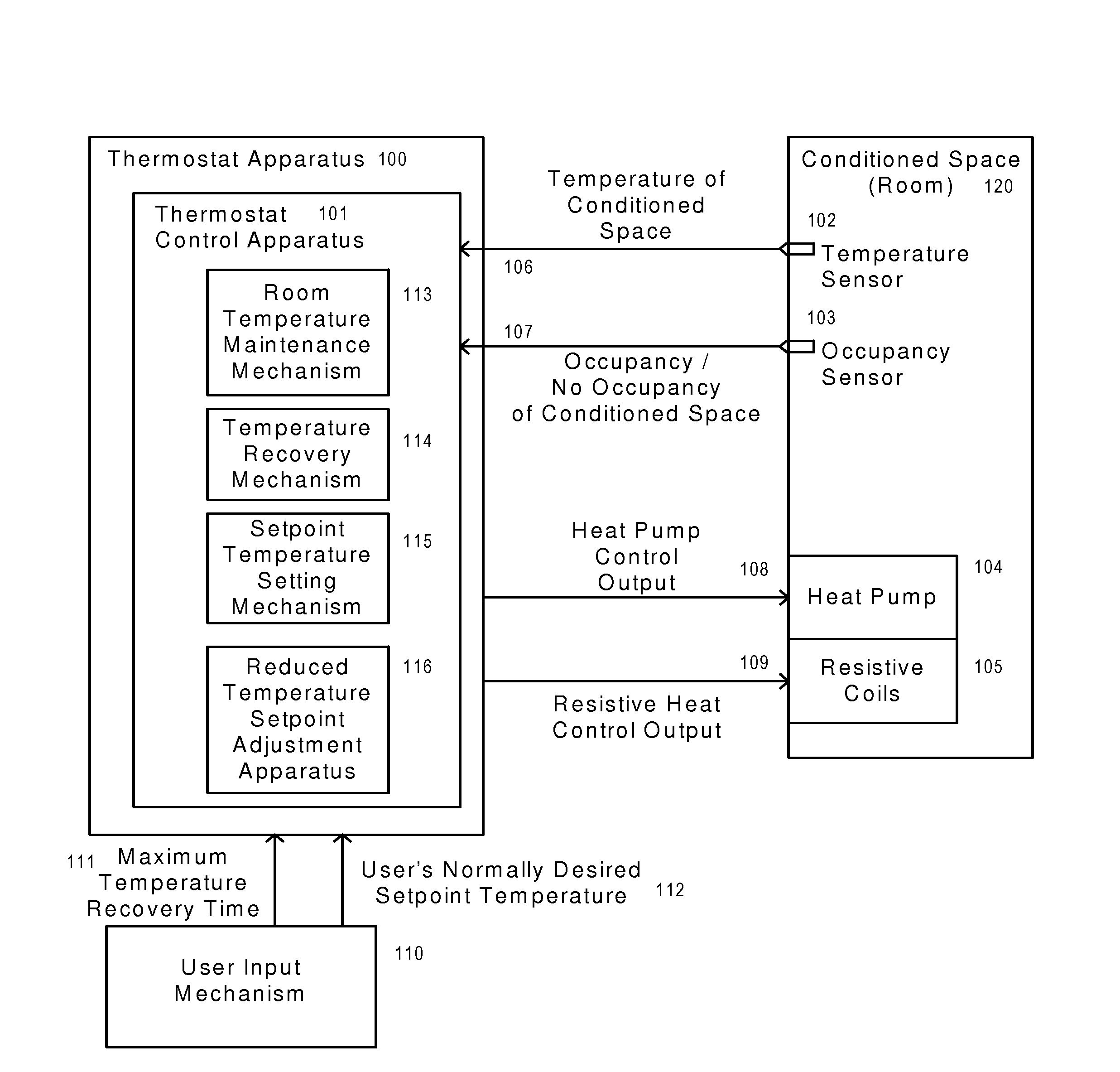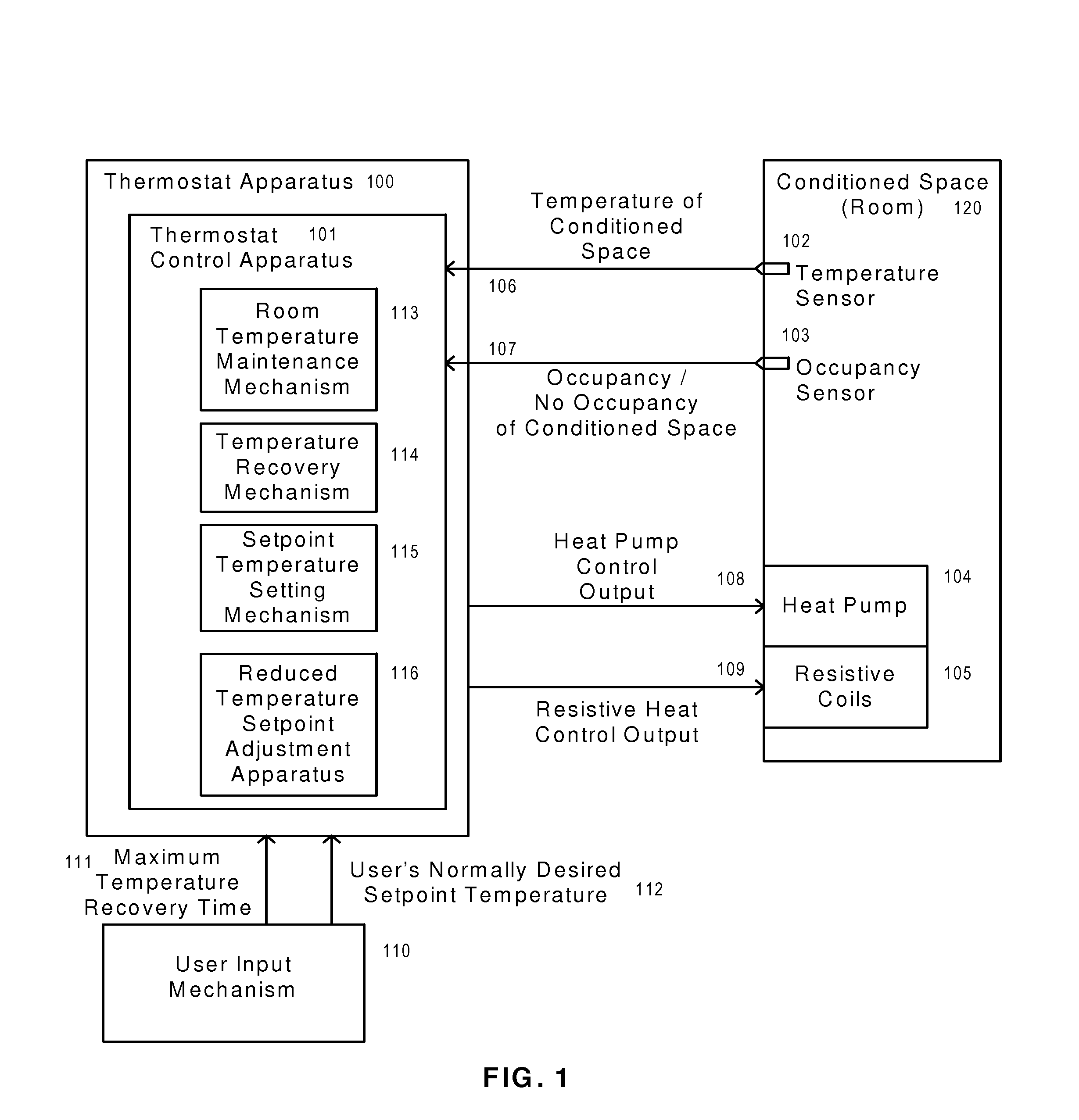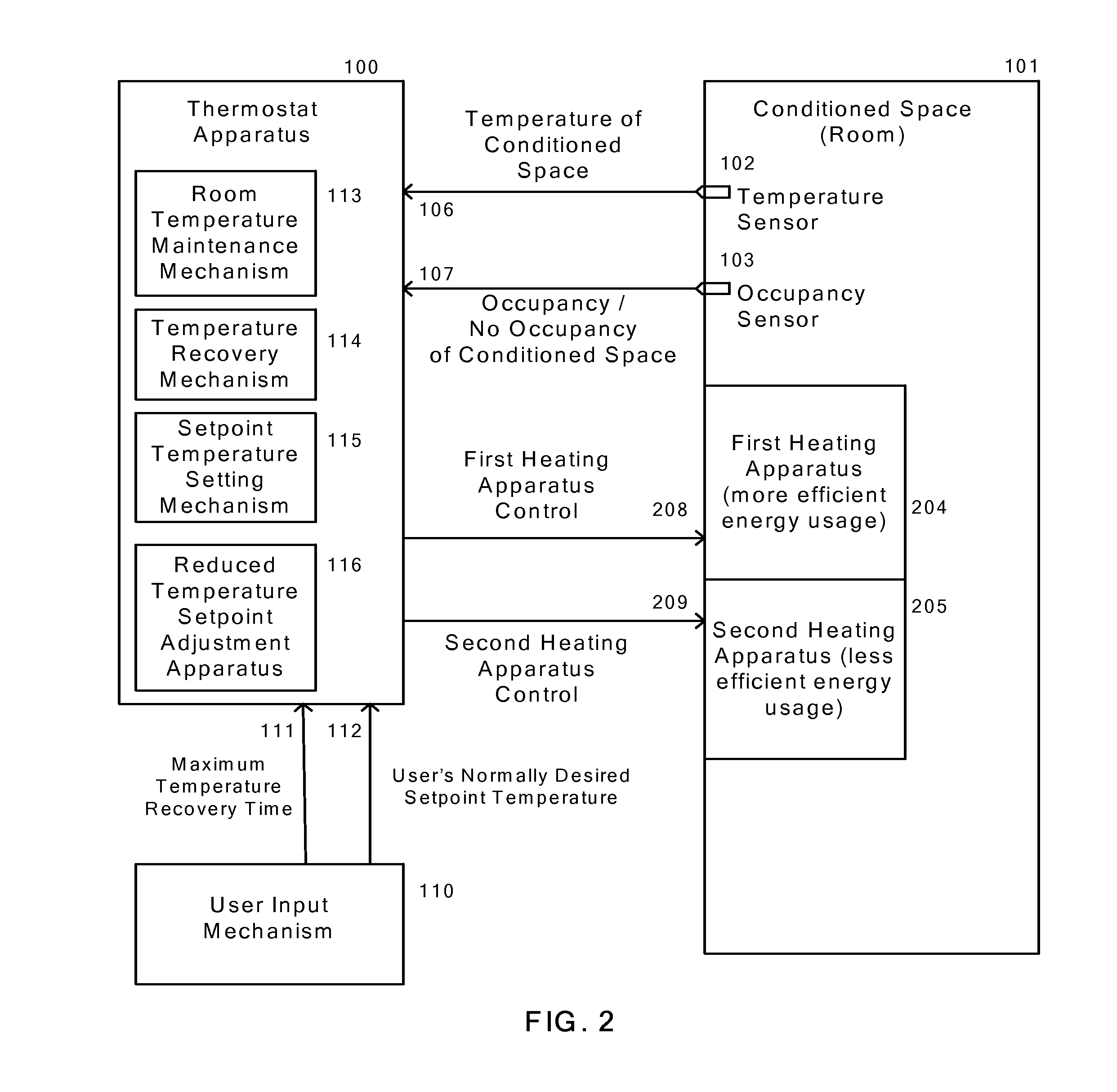Energy management improvement for a heating system with reduced setpoint temperature during no occupancy based upon historical sampling of room thermal response with highest power heat applied
a technology of energy management and heating system, applied in the field of environmental control systems, can solve the problems of reducing pump efficiency, guest coldness, unhappy and/or dissatisfactory, and energy usage for environmental control, especially for heating or cooling, and achieve the effect of reducing energy usag
- Summary
- Abstract
- Description
- Claims
- Application Information
AI Technical Summary
Benefits of technology
Problems solved by technology
Method used
Image
Examples
Embodiment Construction
[0067]FIG. 1 provides illustration of a thermostat apparatus 100 incorporating components and controls for controlling a heat pump 104 with resistive coils 105 for use in heating a room or “conditioned space”120. A temperature sensor 102 and an occupancy sensor 103 are installed appropriate in the room to be able to measure the room temperature and to monitor motion in determining occupancy or no occupancy. The temperature sensor and the occupancy sensor are illustrated as sending signals 106 and 107 to the thermostat apparatus. These sensors may also be incorporated in the thermostat apparatus itself, or attached to or included in the packaging of the thermostat apparatus. In most cases, the thermostat apparatus incorporating the sensors is packaged as a single unit and installed in the conditioned room or space in a good location for monitoring temperature and / or occupancy.
[0068]The thermostat apparatus as shown in FIG. 1 includes a mechanism for maintaining a desired room tempera...
PUM
 Login to View More
Login to View More Abstract
Description
Claims
Application Information
 Login to View More
Login to View More - R&D
- Intellectual Property
- Life Sciences
- Materials
- Tech Scout
- Unparalleled Data Quality
- Higher Quality Content
- 60% Fewer Hallucinations
Browse by: Latest US Patents, China's latest patents, Technical Efficacy Thesaurus, Application Domain, Technology Topic, Popular Technical Reports.
© 2025 PatSnap. All rights reserved.Legal|Privacy policy|Modern Slavery Act Transparency Statement|Sitemap|About US| Contact US: help@patsnap.com



